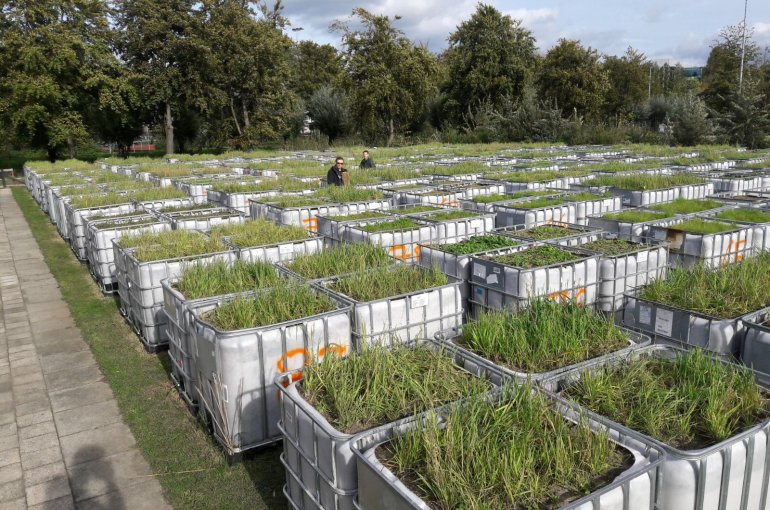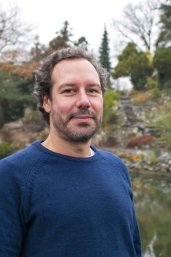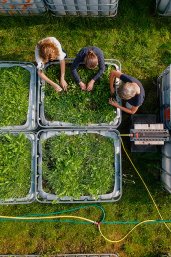Meet the BioCliVE!

Forty percent of all terrestrial ecosystems on earth consists of grasslands. In the Netherlands this percentage is even higher: grass grows on thirty percent of all surface. BioCliVE , an experiment in the Utrecht University Botanical Gardens by the Ecology and Biodiversity group of the department of Biology, replicates natural grasslands to study the effect of climate change on this kind of ecosystem.
Today the world is facing two major global crises. At the one hand there’s a biodiversity crisis, affecting plants everywhere. To cope with this, knowledge is needed on the impact of biodiversity on ecosystems. What are the effects of less divers populations within an ecosystem on the individual plants living in it? This is an important question, not just for ‘natural’ ecosystems but for agriculture as well.
After all, more than 50% of all Dutch farmland is grassland.
The other big issue is the worldwide change of climate. Temperature is rising, which leads to reduced evaporation, which changes precipitation and ultimately causes more extreme whether events. Floods and draughts will be more frequent, longer lasting and more severe. There’s a noticeable change in seasonality of rainfall: more rain in wintertime and less in spring and summer, when plants need it most. The impact on ecosystems is huge.

The more diverse a plant population is, the better its aptness to change. Biodiversity forms a natural buffer against changing weather conditions. ‘Think of an ecosystem as a group of people: every species in the system is an individual’ Yann Hautier, Assistant Professor Ecology and Biodiversiy, explains. ‘Each individual has unique behaviour and response to (unexpected) events. Group members complement each other and the more diverse the community, the stronger and more flexible it is. Whether it’s about researchers or plants: diverse groups are much more efficient’.
Losing biodiversity in grassland will make it more vulnerable to the changing climate. Knowledge is needed on mechanism of biodiversity loss in combination with climate change. In the BioCliVE experiment both plant populations and weather conditions are manipulated to learn more about the relation between the two. Yann: ‘ We need ‘best practices’ for protection of ecosystems to preserve the buffering effect.’
BioCliVE started in 2017 with controlling the biodiversity in the plant populations. This year, the populations will finally be set up for the next phase: the construction of glasshouse to control the climate inside.

‘2023 will be very exciting for us. We’ve been working on the ecosystems for years now but in fact we’ve just started. We’re planning a drought this year and a flood after that. In between, the plant populations need to recover. We don’t know how long that will take, maybe two years, or five?’ Yann says. ‘It’s really a long term experiment, and we are immensely grateful to all alumni who have contributed so far. I was touched by the number of donors, over 500. That’s wonderful, an impressive funding crowd indeed! I’m looking forward to meeting them in person on the 9th of June’.
Meet BioClive?
Do you want to join the project in the Botanical Gardens? During the Sharing Days Yann is sharing the results so far and you can help to collect science data for the next stage.
Event: 9th of June, 1.30 pm till 5 pm, Botanical Gardens Utrecht.
More information and registration, click here.

